Gary Inman (above) is a mild-mannered-by-appearance editor who publishes Sideburn, a British quarterly magazine with a focus on the decidely wild and wonderful world of flat track racing: its characters, machines, events and lifestyle. His influential niche publication resonates with many; I decided to interview a fellow Gary to learn more about him and his efforts to inspire us.
Q: Walk me through the origins of Sideburn. I grabbed my first copy at Fuel Cafe while visiting Milwaukee, Wisconsin for my in-laws’ 50th anniversary in June 2012.
Well, you were late to the party, but that's OK. Sideburn 1 was published in the Spring of 2008. I'd worked as a writer, features editor and editor for motorcycle and automotive mags since 1996, starting on British cult title Streetfighters. I have never had formal training and left school at 16.
I sent articles to the local paper about motorcycles and had a few published and that helped me land the full-time job, leaving a career in engineering design. I moved jobs every 18 months, until I went freelance in 2000. From there I wrote like a wildman. I look back now and can't believe how much I used to churn out. It was a good time to be a bike journalist.
In 2007, I was getting a little stifled by the lack of ambition or adventure of some of the magazines, they had quite narrow remits and I use the example that I kept being asked to interview Kevin Schwantz, who by that point had been retired for years. Schwantz is great, but I'd interviewed him a few times and thought there were lots more people with stories to tell.
Still I was doing some really fun stories, and the magazine I was working for a lot, Performance Bikes (PB) — under the editor Tim Thompson — was really imaginative until senior management put the brakes on them. PB were the first mag in the world to do a feature on the Wrenchmonkees, that I wrote, but they didn't seem to want to do too much more on that emerging new breed. I was pushing for it.
Around a similar time I found Dice, it was about 3 or 4 issues old. It changed my life. This eclectic ‘zine, out of London, showing a world I only knew a tiny bit about. I'd been racing dirt track in the UK for a few years, one of the first couple of dozen riders to take it up in the UK, and decided I'd like to make my own Dice-style zine to flex some of the creative muscles my regular mag clients weren't using.
I contacted a photographer, Ben Part, who'd I'd done a couple of jobs with, to ask if he would design a mag. He had no design experience at all but I liked that, because I didn't want it to look like a newsstand mag. I got a few advertisers on board, wrote most of it, Ben shot a few of the features, I got some other photos from friends, an interview with Nicky Hayden, a profile on a new company called Deus Ex Machina, put a Mahony photo of Gene Romero on the cover and put all the money up myself to print a few thousand of them.
Only then did I realise I had no idea how I was going to sell them. Honestly. People had to send us personal cheques. There was no business plan or even an idea to create Issue 2. We didn't have a website or anything.
Q: You’re the face of Sideburn magazine, and who are all the folks involved these days?
I make the mag, with the help of freelance designer Kar Lee and deputy editor, Mick Phillips. Kar has designed the mag since February 2016, Mick has been on board from Issue 2 or 3. I'm editor, publisher, ad sales, merch dept, marketing, web designer. My wife handles the web sales and some of the accounts. I do everything else, except what Kar and Mick do on the four issues we make per year.
So I'm the face of the magazine, but I'm also the hands, feet and arsehole.
Q: You’re a publishing juggernaut, Gary. How do you manage to publish a quarterly print mag, maintain the blog, write a book about building motorcycles and message the world through social media on a regular cadence?
I like working. I've worked pretty much five/six days a week since I was 13, with paper and milk rounds, then an apprenticeship. I found a job I love and most of the time I don't resent it. I'm not quite as productive as I was in my 30s, but I spend a lot of time staring at my laptop.
Q: Which bands/artists provide the soundtrack for your work day?
Right this minute, Motown Northern Soul obscuros, The Temptations Psychedelic Soul. 1960s French female yeah-yeah compilations.
Q: Speaking of Sideburn, walk me through its pre-production process.
This is like asking a fish to explain how it swims. I open my eyes, walk the dog, work on Sideburn, watch an hour of some Scandi-noir or Netflix box set and go to bed. Some days I take off to ride, race or go out with my wife and daughter.
Q: You’re kinda like Roland Sands, a brand agnostic working with several OEMs. How do you manage to stay in good graces with everyone?
Don't most magazine editors and journalists have relationships with lots of manufacturers? If they don't, either they're doing something wrong or their contact at the manufacturer doesn't understand their job. It's down to communication. Set the boundaries, be honest, tell your contact what you're going to deliver, then deliver it.
There are plenty of companies I don't deal with, because they're not on Sideburn's radar - MV Agusta for instance. I have no problem with them, or them with us; our world's simply don't currently overlap.
Q: That said, the recent Harley-Davidson “50 Years of Race Wins” video that you wrote the script for certainly inflamed commenters. Why do you think so many people carry such vitriol toward The Motor Company?
Did it? I have no idea. I don't engage with Facebook, and I'm guessing that’s where you're referring to (it was YouTube, actually. I don’t use Facebook ~ GB). I love the XR750 and the era it raced in, but I love the Indian FTR750 too. Lots of people have lots of opinions about Harley. They're unique in the motorcycle world in that way.
Sideburn has worked with H-D for years, but we've also worked on interesting projects with Indian, Royal Enfield, Herald and others. Just because we like the products or vision of one company doesn't mean we have to not like someone else's.
Q: Tell me how you met See See’s Thor Drake, and how that relationship has evolved.
Thor got in touch when he just moved to the NE Sandy site, but I'd seen a bit about him on the much-missed Hell For Leather site. We featured him and I went to the One Show in January 2013. We were on the same wavelength. I had the time of my life in Portland.
Then Thor came to England, raced Sideburn's bike at Dirt Quake, then rode down to Wheels and Waves. He wanted to do Dirt Quake in the USA and we put on some of the wildest bike events ever, legendary weekends at Castle Rock that sailed so close to disaster that I am ashamed to admit, one night I was leaving the site for a hotel room that smelt of feet, just as the cops arrived and I kept driving. Thor, George and the rest of the See See family have a very special place in my heart.
Q: Who are some of the flat track scene’s most colourful characters and why?
Dave Skooter Farm - a crucial part of Sideburn and Dirt Quake, a DIY creative, punk hero;
Jeffrey Carver - hippy racer throwback who can beat the best in the world;
Michael Lock - boss of AFT, Englishman shaking the sport into the 21st century (like it or not);
The dozens of 60- and 70-year-olds all over the US who still regularly race;
Meatball and the Hell on Wheels crew - punk rock race organisers;
Cheetah and the Have Fun Crew in Japan - small bike fun;
Anthony Brown and the DTRA - built a totally feelgood amateur scene in the UK, stepping in when Peter Boast, the Godfather of UK dirt track had enough;
Plus Flat Out Friday, Vancouver Flat Track Club, Dirt Track Lelystad, Marco Belli, Pete Boast, Travis Newbold, KrowdRace, Greenfield George, Suicide Machine Co, so many who keep the sport alive in many different ways.
Q: How did the idea for writing ‘nobituaries’ arise?
Not sure, but who doesn't like to be appreciated? For the first five or six years of making Sideburn, former colleagues would ask 'What's it making?', I told them 'friends'; they meant financially of course. Sideburn has been helped by so many people, I want to make a public show of appreciating them.
But then I worry I miss some people out. That's why our Instagram feed never wishes anyone ‘happy birthday’. We know a lot of people and it could be three birthdays a week and get repetitive. Then, if I was switched off and missed someone, it might seem like a personal slight.
Q: Who are your current flat track faves and why?
I admire the champs, but I root for the underdogs. Carver, Cory Texter, Cameron Smith. I like Dalton Gauthier a lot, too, but I've never actually spoken to him. There isn't a top racer I don't like; none of them have ever given me a reason not to.
Q: What do you make of the RSD Super Hooligan series?
I like that it's not afraid to mutate. It didn't get hung up on being a flat track series. It does Supermoto-style races, it races on dirt, tarmac, it can do anything it wants. The early adopters have already moved on to desert racing big street bikes or whatever now, because those kind of people either: a.) Have been in Superhooligans the longest and want something new; b.) Want to be a big fish in a small pond; c.) Get bored more easily; or d.) Get given new opportunities to ride free bikes.
“I admire the riders who buy their own bikes and finance their own racing more than those who are put on 'factory' bikes, but that's just my background and recalling where the scene came from, but there's room for everyone. I'm just glad there are manufacturers and sponsors willing to support it and put people on bikes.”
I have huge admiration for Roland and his team. They hardly ever put a foot wrong in my opinion.
Q: What are your all-time fave bikes and why?
I could spend hours on this, so let's keep it simple and say my favourite bike is my Wood Rotax 600 race bike. I've raced it for about 15 years and it's been good to me.
Q: Pre-COVID you had a good thing going organizing Sideburn moto trips. Once we return to normal, where do you want to explore next? Tell me what these trips entail.
These are the things I've missed the most. I've organised trips, with travel company partners, to India, Morocco and Nepal. Over ten in total, including two groundbreaking women-only trips to the Sahara. We'll offer more to Morocco, I think, and definitely Nepal, when we get the chance.
We promote the trips to the wider Sideburn universe and we seem — touch wood — to always attract a really great group of riders who all get on. We don't seem to attract grumpy, jingoists, like trips I've been on with other companies have done. People who really ruin the mood at every meal stop.
It's too early to say where we plan next. As I write this I'm trapped on 'Plague Island'.
Q: Speaking of bikes, why do you think it’s so hard for major manufacturers to produce proper affordable production flat track bikes for the non-racing masses to buy at dealers? The FTR1200 and Scrambler Ducati kinda missed the mark.
You mean street trackers not flat track bikes. Flat track bikes are for racing. If you're talking affordable new race bikes, look at what Royal Enfield and S&S have done with the Himalaya FT411. If we're talking street trackers - the current Fantic Caballero Flat Track and Herald Brute 500 are successful modern takes on the breed, but admittedly, they're both singles and from smaller manufacturers.
It’s hard to say the Ducati missed its mark when they sold loads of them. The FTR1200 didn't tie in with the early marketing, but people like it and it's a great bike for the money.
Why I think manufacturers don't, not can't, make a production street tracker that looks like a race bike with lights is because flat track race bikes are really extreme. They have pretty short wheelbases, steep steering, no seat padding, no airboxes, and, crucially, tiny gas tanks. They have very particular silhouettes because they're so stripped back.
The public think they want one, but the road testers would say it has a 70-mile range and it's nervous at high speeds and the public would choose something more sensible. Those who want a twin cylinder street tracker should contact Mule Motorcycles in San Diego, or build their own.
It's not difficult. In fact, I've written a book about it...

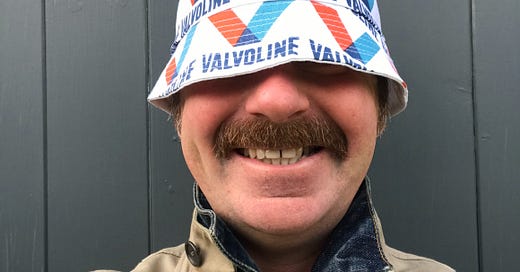



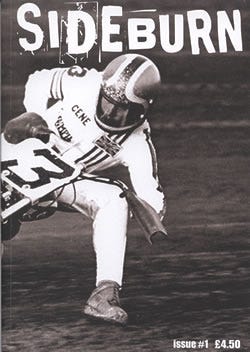


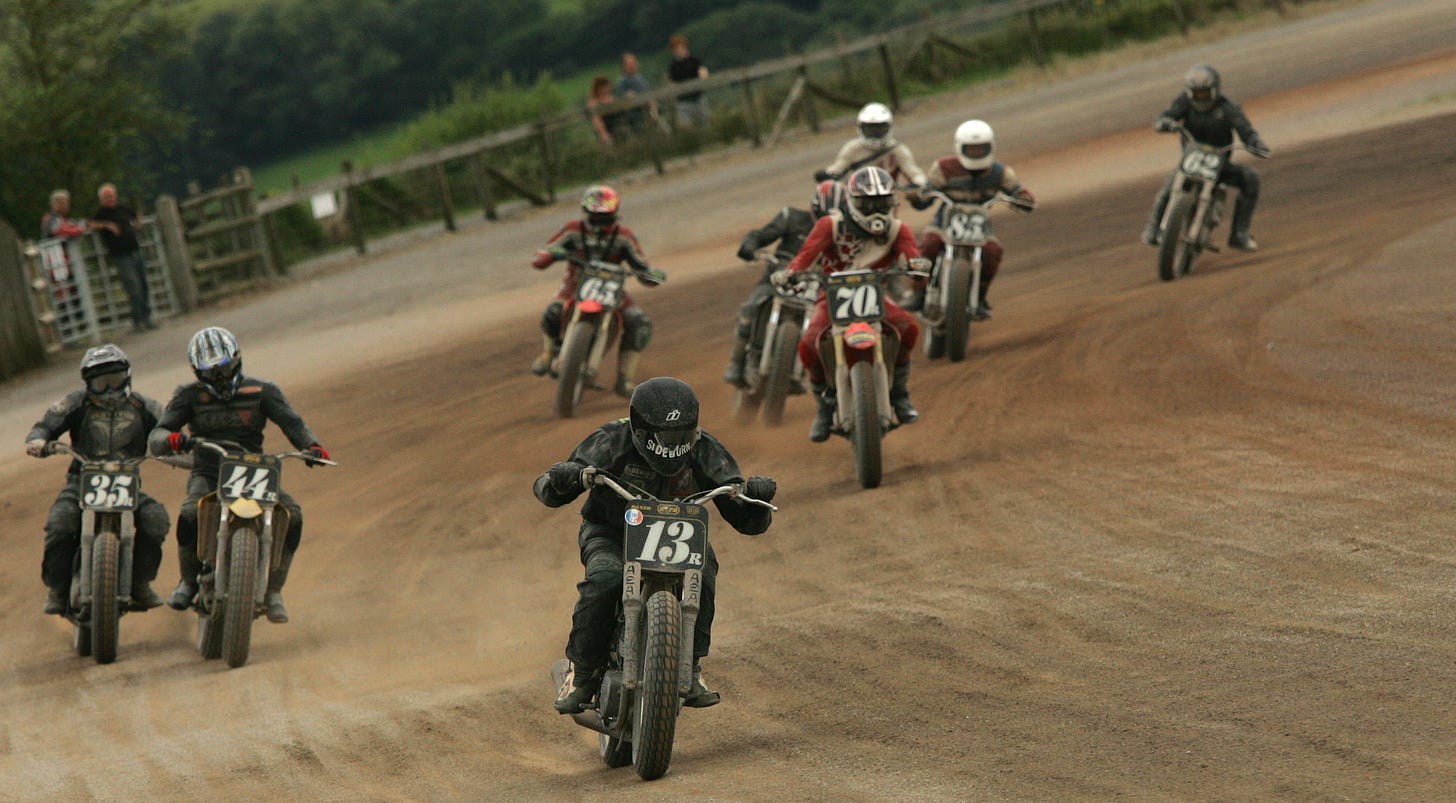
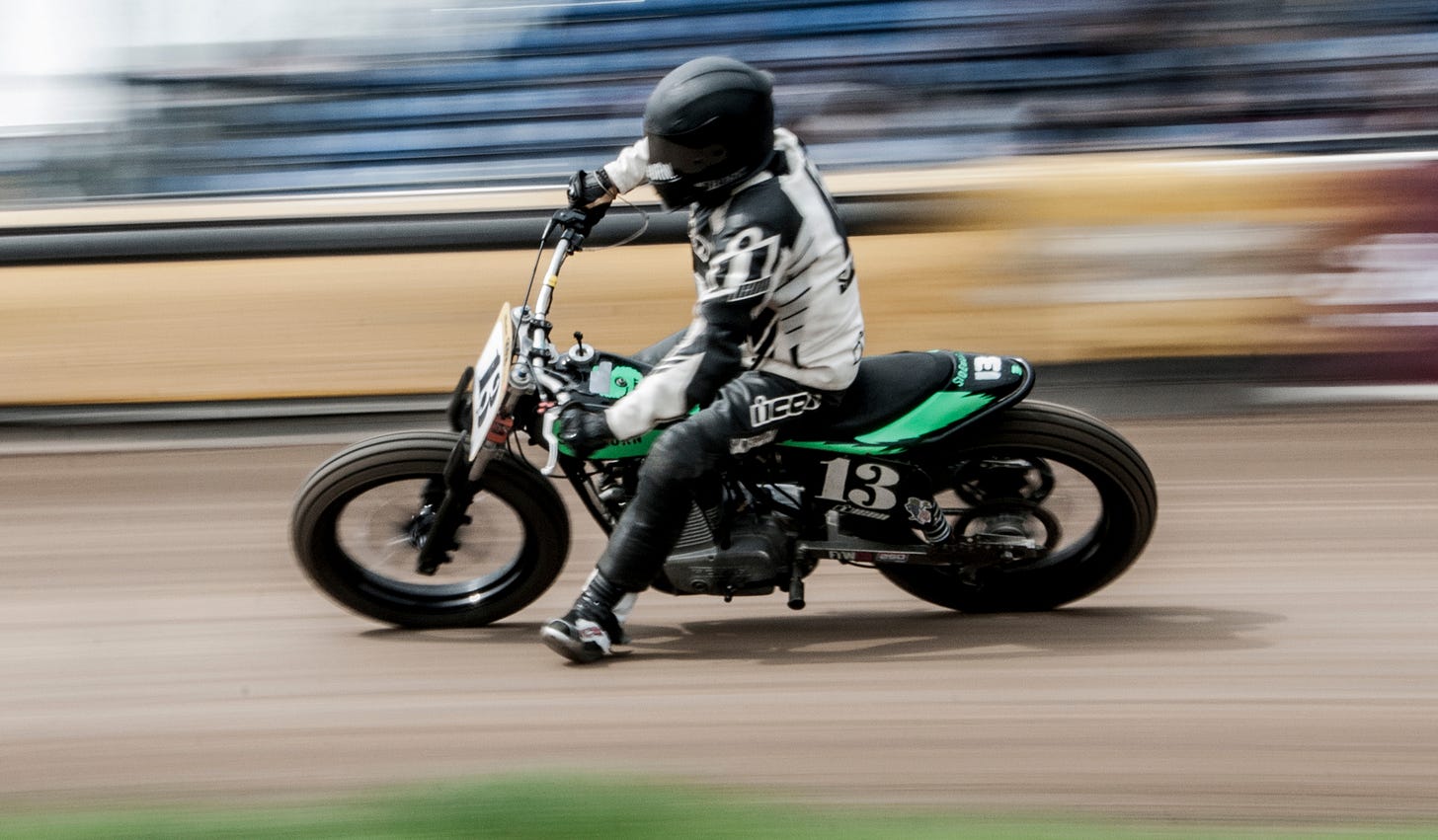
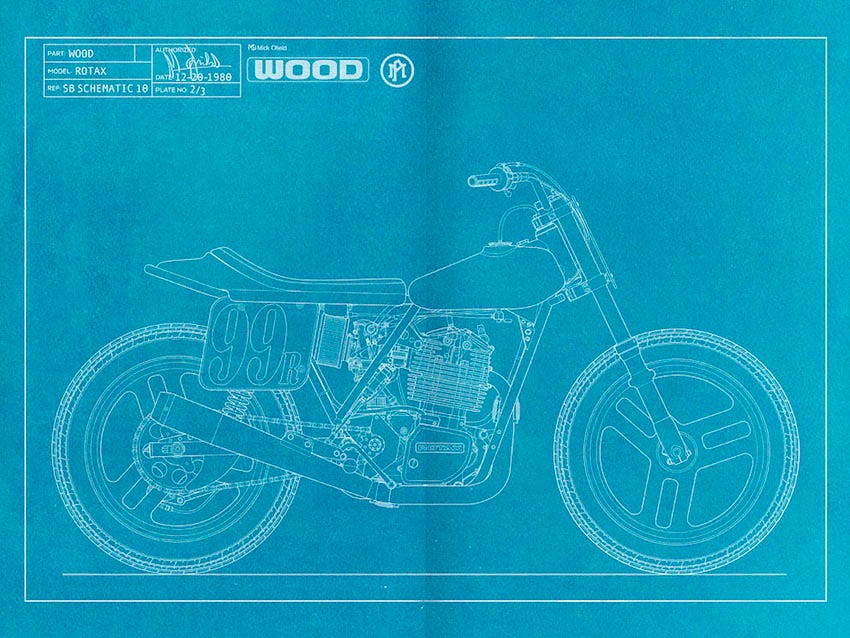
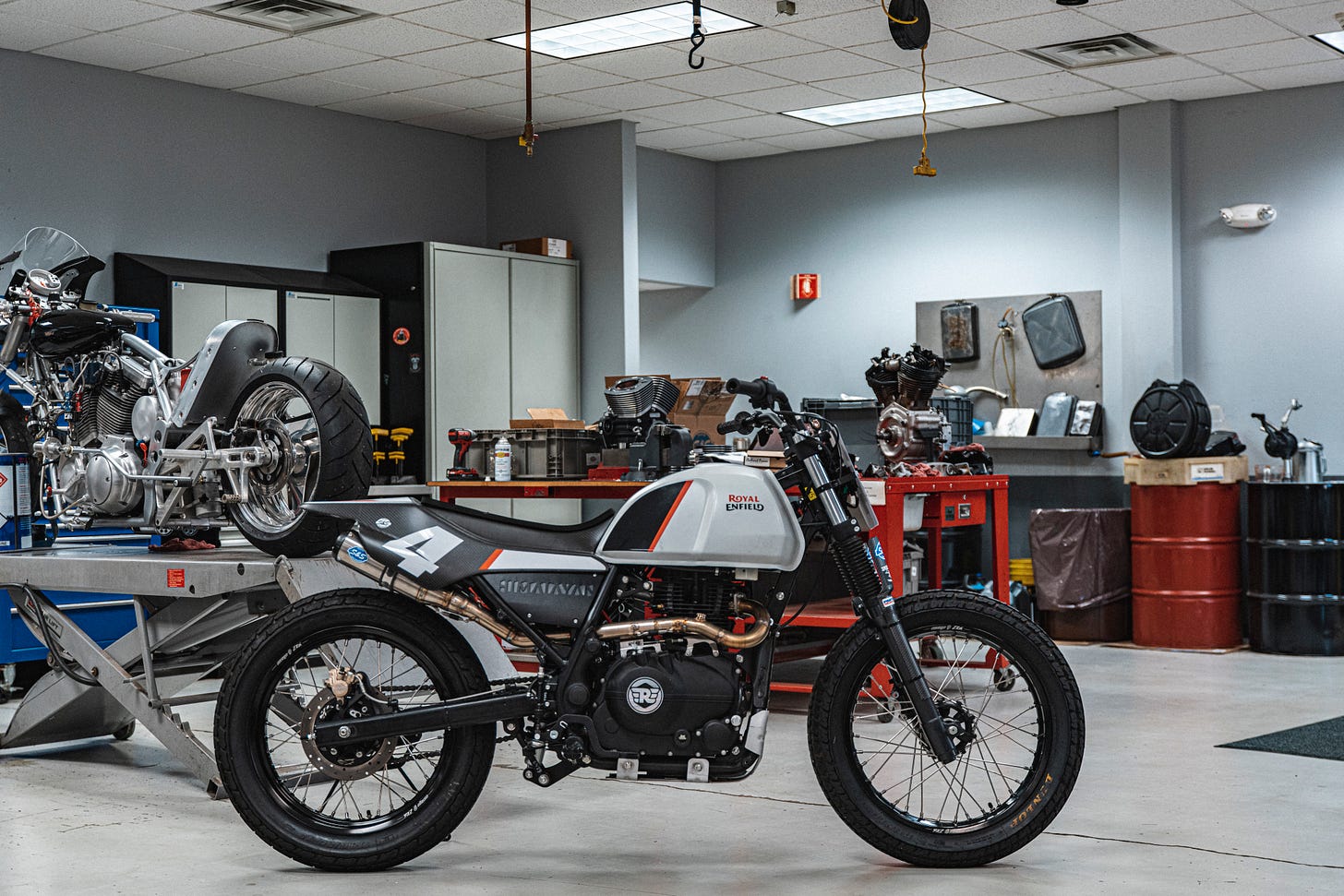
As always, nails were hit on the head. Cheers G.
Can Gary come to our house for drinks and dinner???